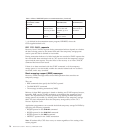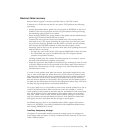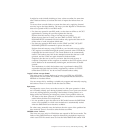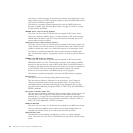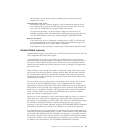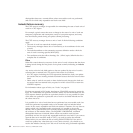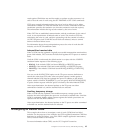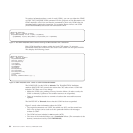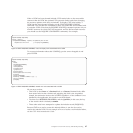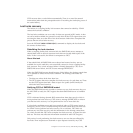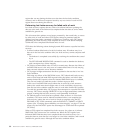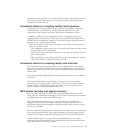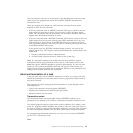
To retrieve information about a unit of work (UOW), you can use either the CEMT,
or EXEC CICS, INQUIRE UOW command. For the purposes of this illustration, the
CEMT method is used. You can filter the command to show only UOWs that are
associated with a particular transaction. For example, Figure 4 shows one UOW
(AC0CD65E5D990800) associated with transaction UPDT.
Each UOW identifier is unique within the local CICS system. To see more
information about the UOW, move the cursor to the UOW row and press ENTER.
This display the following screen:
The UOWSTATE for this UOW is Indoubt. The TRANSACTION definition
attribute WAIT(YES|NO) controls the action that CICS takes when a UOW fails
indoubt. CICS does one of two things:
v Makes the UOW wait, pending recovery from the failure. (In other words, the
UOW is shunted.) Updates to recoverable resources are suspended,
v Takes an immediate decision to commit or backout the recoverable resource
updates.
The WAITSTATE of Shunted shows that this UOW has been suspended.
Figure 5 reveals other information about the UOW:
v The original transaction was UPDT, the taskid was 3155, and the termid was
S233. Any of these can be used to tie this particular failure with messages
written to CSMT.
v The UOW has been indoubt for 826 seconds (AGE).
v The cause of the indoubt failure was a Connection failure. (The connection is the
dummy connection used by CIND DFHINDSP.)
INQUIRE UOW TRANS(UPDT)
STATUS: RESULTS - OVERTYPE TO MODIFY
Uow(AC0CD65E5D990800) Ind Shu Tra(UPDT) Tas(0003155)
Age(00000680) Ter(S233) Netn(IGBS233 ) Use(CICSUSER) Con Lin(DFHINDSP)
Figure 4. The CEMT INQUIRE UOW command showing UOWs associated with a transaction
INQUIRE UOW TRA(UPDT)
RESULT - OVERTYPE TO MODIFY
Uow(AC0CD65E5D990800)
Uowstate( Indoubt )
Waitstate(Shunted)
Transid(UPDT)
Taskid(0003155)
Age(00000826)
Termid(S233)
Netname(IGBS233)
Userid(CICSUSER)
Waitcause(Connection)
Link(DFHINDSP)
Sysid()
Netuowid(..GBIBMIYA.IGBS233 .O;)r...)
Figure 5. CEMT INQUIRE UOW - details of UOW AC0CD65E5D990800
86 CICS TS for z/OS 4.1: Recovery and Restart Guide



